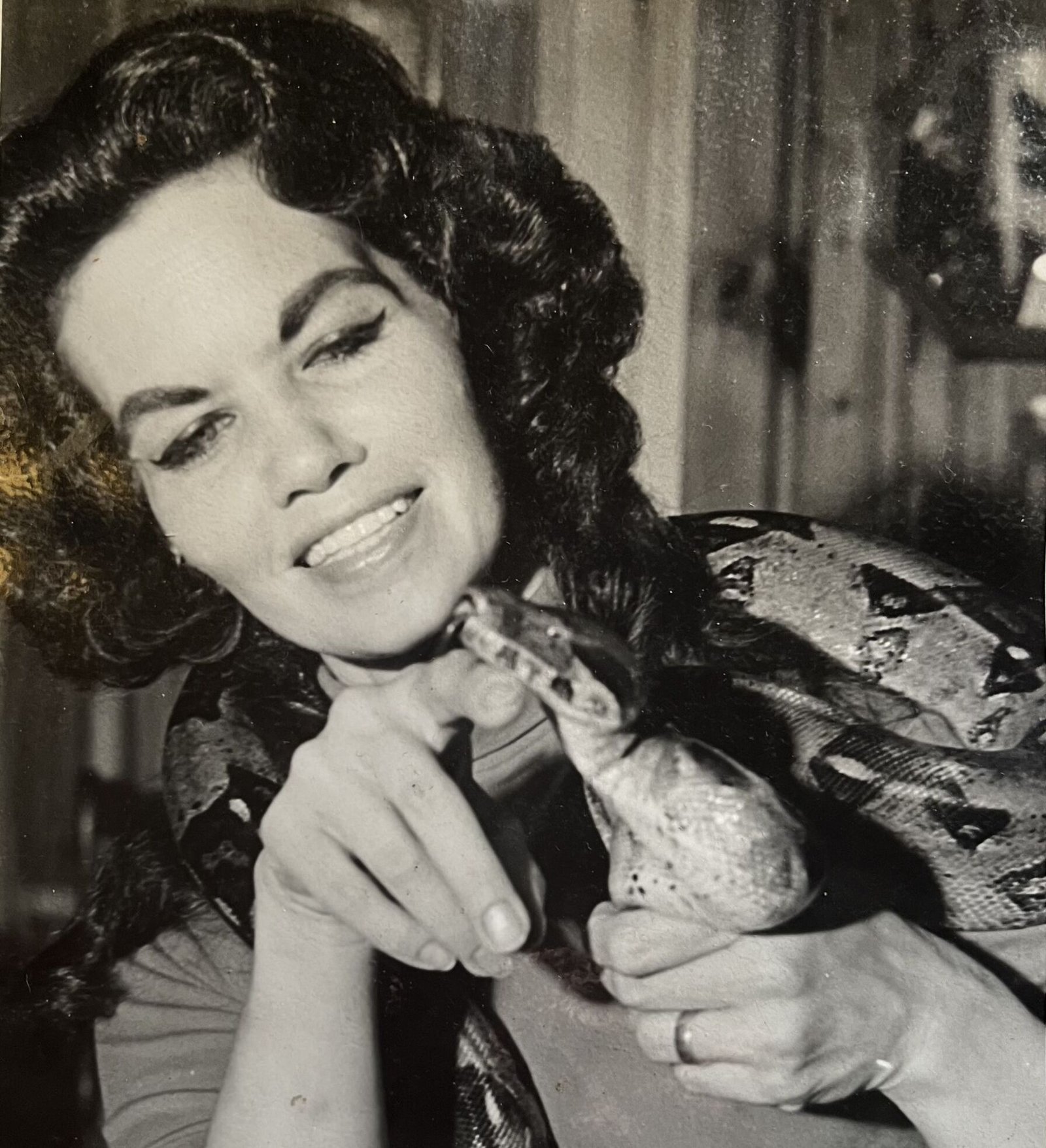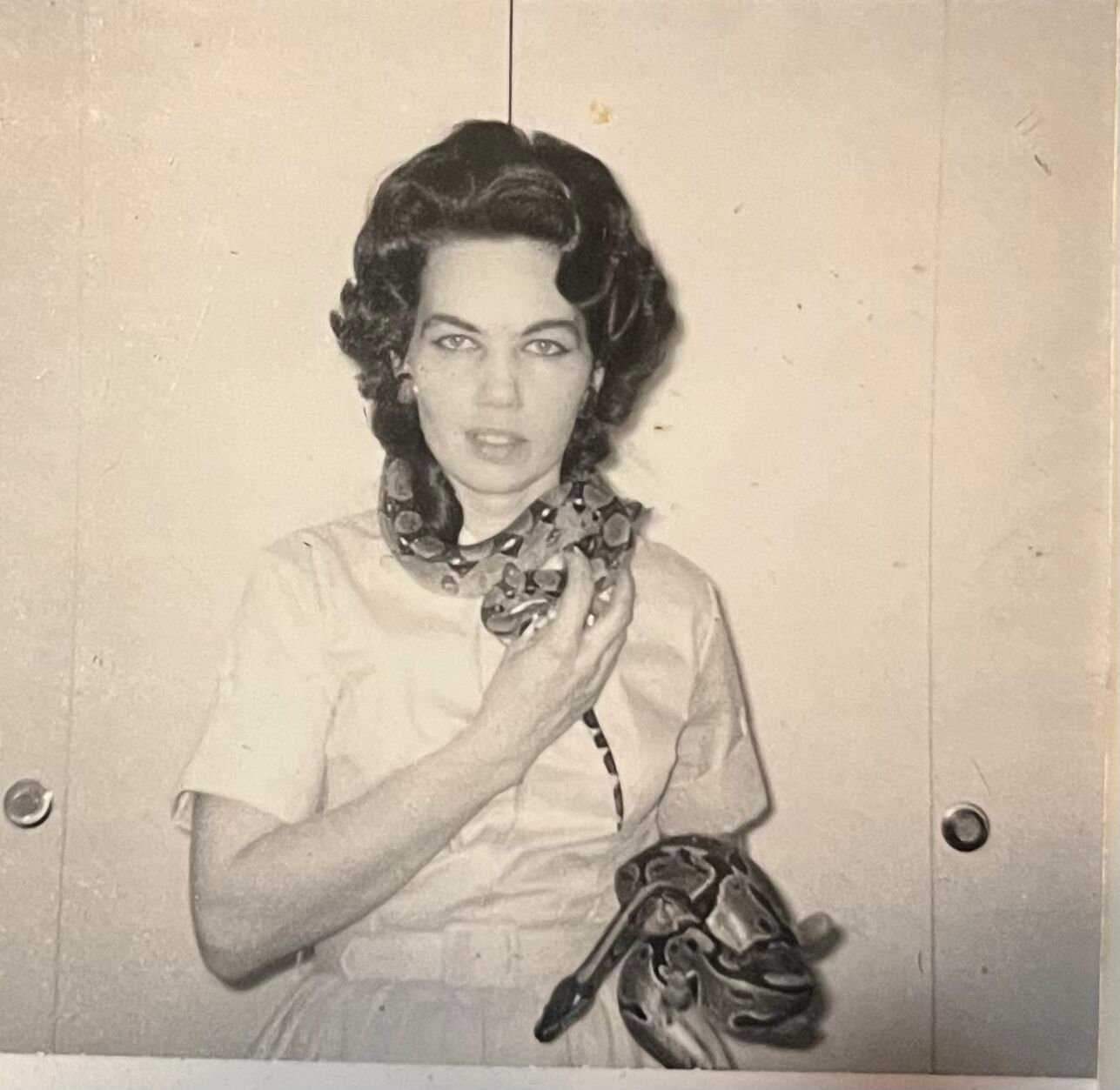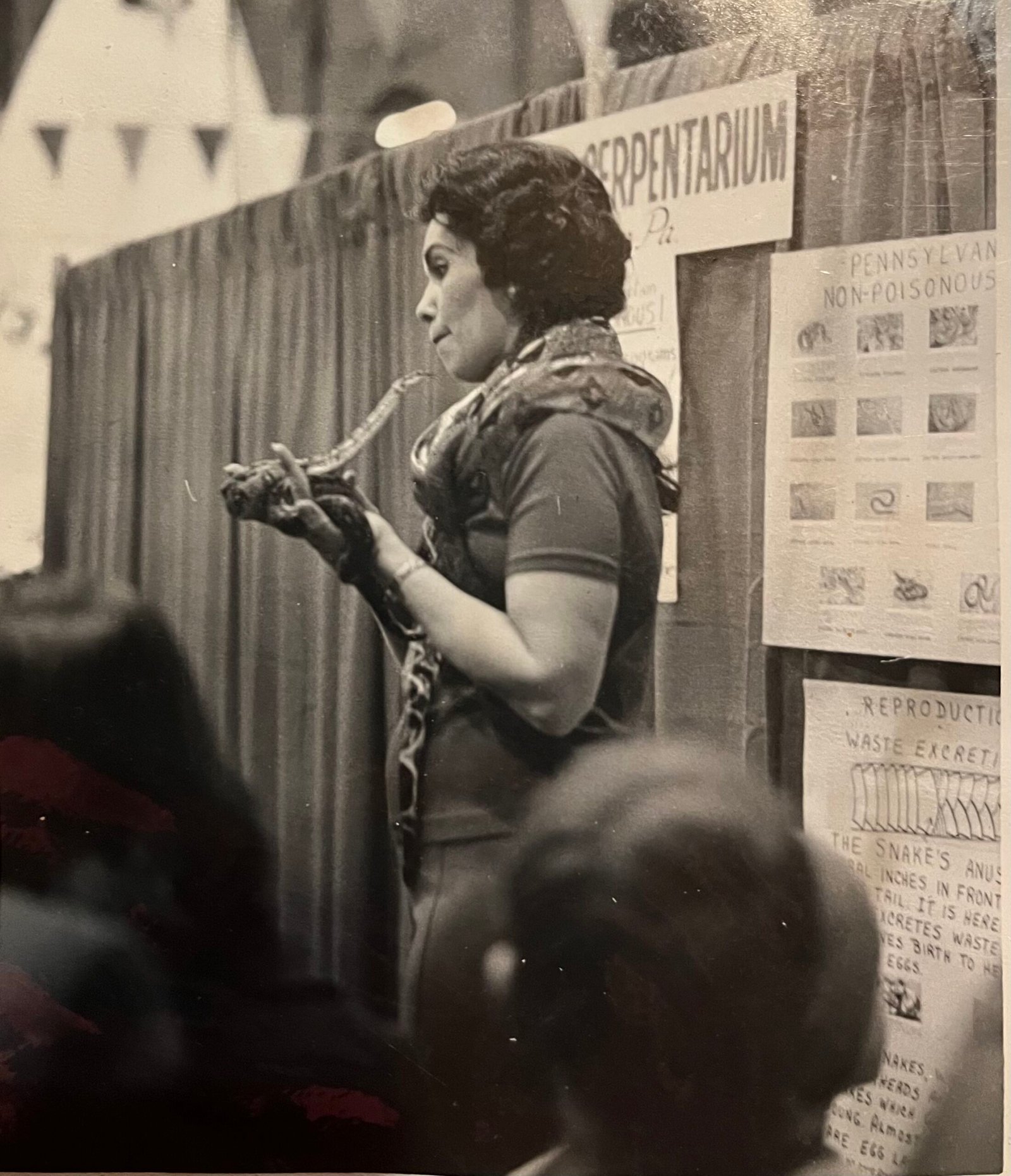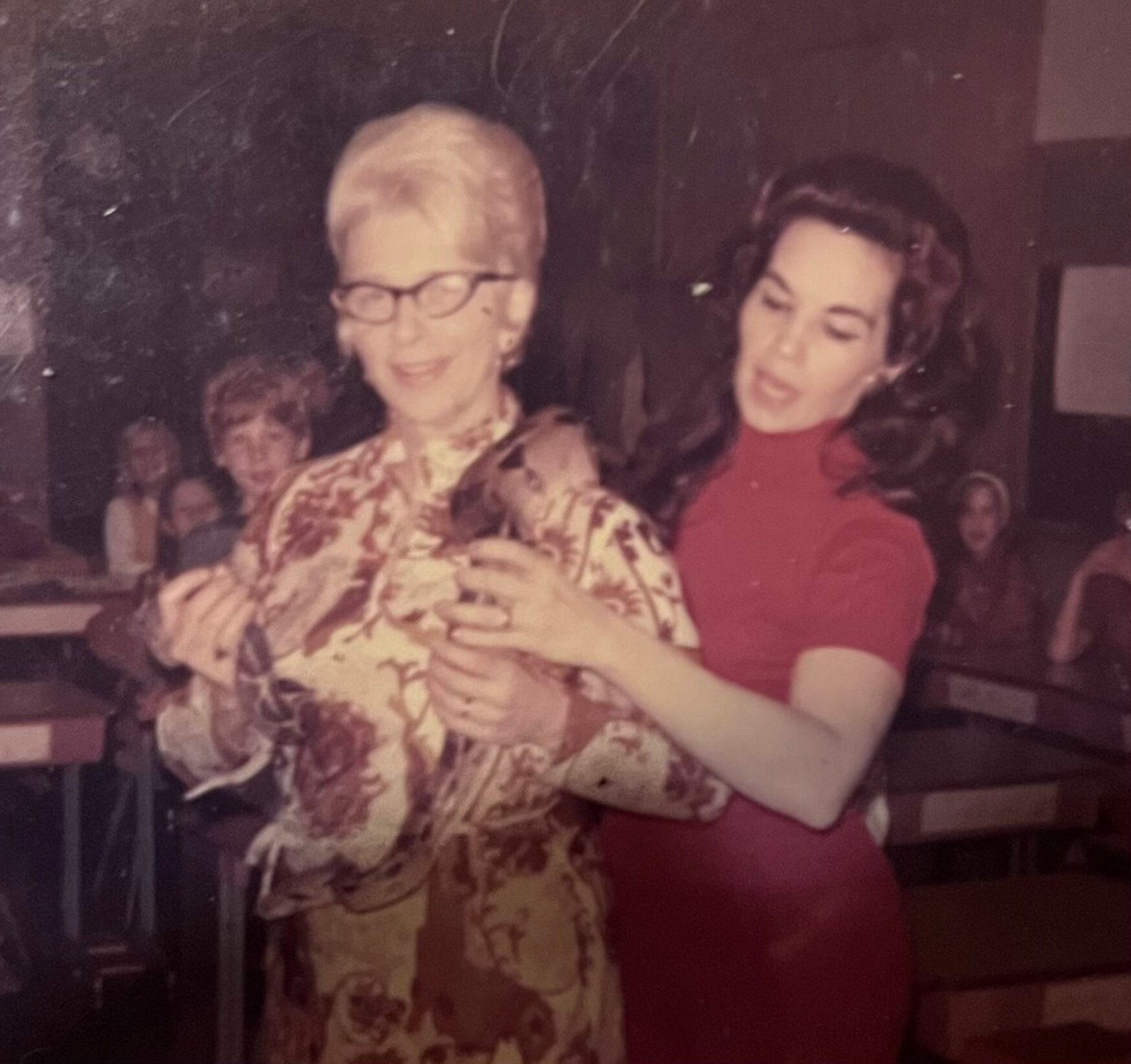Not everyone is qualified to be called The Snake Teacher. After the tiny black snake Speedy joined the Crone household in Mechanicsburg, PA, in 1969, Elmer and Jane, along with their five children, started taking in more snakes, often brought to them by friends and neighbors. By the early 1970s, their home housed between 20 and 40 snakes. Jane learned to understand her creatures and says it became her mission to teach people that snakes have a special purpose in our world.
The Snake Teacher
Jane, the snake teacher, took her snake lessons on the road. She enjoyed talking to children and teaching them to respect snakes. She brought her snakes into the classroom and let students hold them. Jane never frightened children or told them to go home and get a snake. She loved teaching elementary school kids because they were eager to learn as much as they could about these creatures.
“To me, snakes weren’t a terrible thing. They were important.”
Jane would say, “For the next hour and a half, I want you to be a snake. If you were outside and someone came with a gun or threatened you, and you were that snake, what would you do?”
Students would respond with “I’d run” or “I’d bite.” Every student had their own idea.
Then Jane would explain: Everything that’s put on Earth is here for a reason, and snakes are put here for a reason.
Learning About Snakes
The snake teacher explained to her audiences that snakes coil up and prepare to strike when they are scared, but if left alone, they usually go away.
She taught students to touch a snake with the back of the hand. “The front of your hand sweats, and that makes the snake think you’re slimy,” Jane says. "A snake’s skin feels like a baby’s bottom, and the skin on a boa constrictor is as smooth as silk."
Some adults asked Jane, “What good are snakes anyway?” Jane explains that snakes are not only here for a reason, but they are also helpful to people in many ways.
Snakes help control rodent populations, particularly rats and mice. These rodents are known to carry zoonotic diseases, which can be transmitted between animals and humans. A single timber rattlesnake can eliminate between 2,000 and 5,000 Lyme disease-carrying ticks each year. It achieves this by consuming the rodents that carry these ticks.
Snakes play a crucial role in the food chain. They both eat smaller creatures and serve as prey for birds and larger animals, like foxes.
Some venomous snakes produce a type of protein that can be used to prevent the spread of cancer and inhibit tumor growth. Copperhead venom contributes to ingredients in a powerful, non-addictive pain reliever. Some enzymes in venom are used in medicines that treat heart disease, diabetes, and hypertension. They also aid in blood clotting and help slow bleeding after surgeries.
I Don't Mess With Snakes
Most teachers and administrators loved Jane’s lessons because the kids were so enraptured, and Jane and her husband never charged a fee for doing presentations. Not everyone was excited by the school visits.
Once, Jane gave a school assembly in Edison, New Jersey. The principal told her that his student population was a challenging group. He said, “After about half an hour, the assembly usually gets canceled and we send them back to their classrooms because they make too much noise, act up, and throw things.”
Jane draped her largest python around her neck and stepped out from behind the curtain, holding a walking mic. Twenty minutes into the assembly, the chatter began to grow. Jane went silent and waited. Finally, she said in a soft voice, “If you settle down and get quiet, I’ll tell you something your parents don’t know anything about.”
You could hear a pin drop as Jane explained how snakes reproduce. Jane used her understanding of children to motivate students to learn.
At another school, Mrs. Crone was teaching in a classroom. The teacher required each student to hold or touch Jane’s snakes. But when Jane presented the reptile to the teacher and said, “Now, it’s your turn,” the teacher refused. She said, “I don’t mess with snakes.”
Jane asked the teacher to step into the hallway. She said, “I’m a little shocked. You made the kids touch the snake, and you won’t do it. You owe it to your children to go back into that room and touch the snake.” She talked openly with the teacher about racial prejudice and how people sometimes judge and call names based solely on skin color. She reminded the teacher that people treat snakes the same way.
Finally, the teacher agreed to return to the classroom and touch the snake. The kids cheered. She admitted that she was terrified but said, “It feels fine.” Jane and the teacher remained friends for some time after that.
Snakes Everywhere!
Jane says, “It’s sad to go through a lifetime scared of something because you don’t understand it.” The Crones spent many years working to help people better understand snakes.
They shared their snake family at over 40 school assemblies within a single year. Jane presented at places like the 1973 Lower Swatara Carnival, Cub Scout meetings, and the Eastern Sports & Outdoor Show in Scranton. She delivered nine talks on snakes at the Delaware DuPont Design Safety Convention that focused on camping. Jane appeared on Romper Room and brought her reptilian friends along to open the new pet department at Montgomery Wards in Carlisle and to raise funds for school PTA groups.
In the early 70s, Jane told a newspaper reporter that her boa constrictor, Happy, was handled by 90,000 people during various shows.
Over time, the snake teacher's expertise allowed her to become a snake doctor for Docktor’s Pet Stores, circuses, and the Hershey Zoo.
At the Dupont Show, a boy was so scared that he wouldn’t go into the room with the snakes. During breaks, Jane talked with the boy and explained how snakes react to people. After three days, the boy finally entered the room and held the snakes. Before overcoming his fear of snakes, the young scout was afraid to go on camping trips with his troop. Jane helped the boy get past a crippling fear.
Several years ago, at a community pig roast, a huge man called out, “It’s the snake lady!” He hugged Jane and said that as a child, he attended every show he could. Jane loves hearing from people who remember her as the Snake Lady.
Jane hasn’t had snakes in her home since 1986, but she still teaches anyone willing to listen. Last July, Jane, with help from her home health care friend Leann, gave a presentation using her photos and books to a room full of older adults at a senior center.
My friend Patty and I visited Jane one day when Patty told me how Jane had helped her when she faced a large black snake in her yard. Jane said, “Get a shovel and slide the snake onto it. Put the snake in the woods. It won’t come back again.”
I’ve learned to tolerate, if not become friends with, the little black snake that crawls around my flower beds. I’d rather have the snake than the mice. I’m not sure I’ll ever become a friend to snakes like my friend Jane, but the next time I see one of these creatures, I'll face it with a new perspective.






